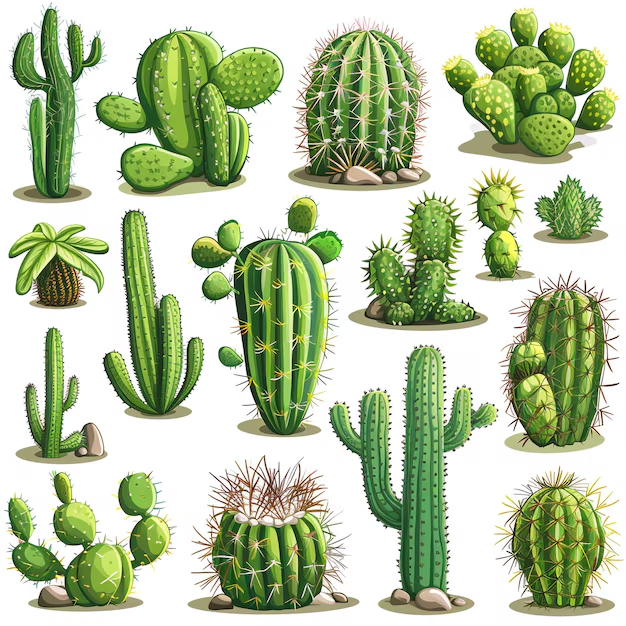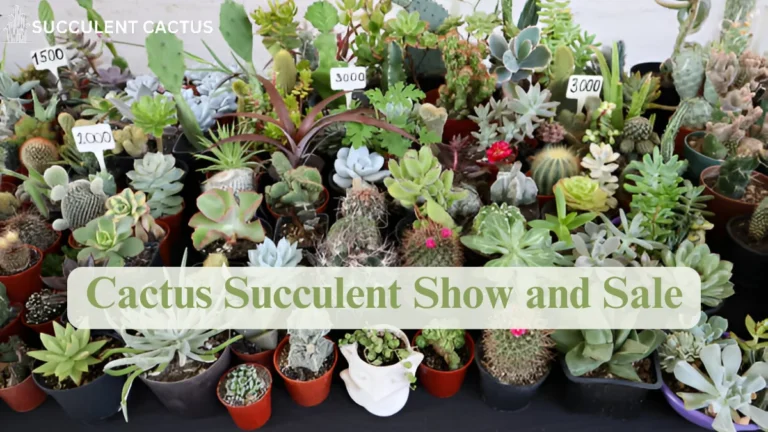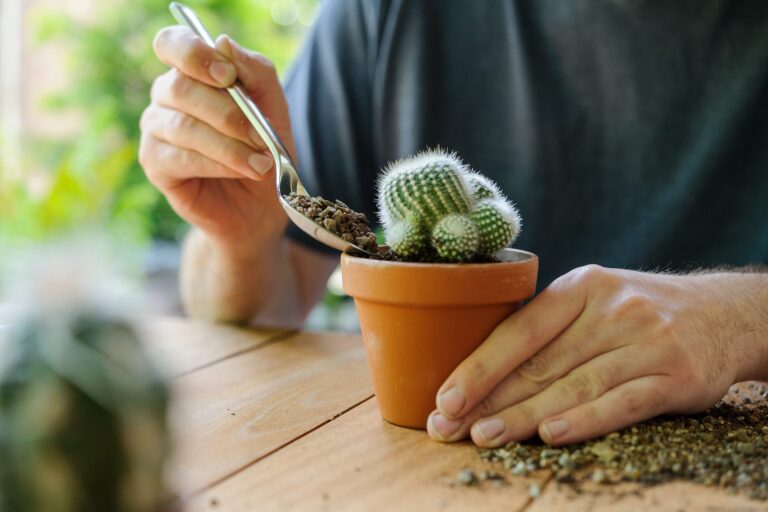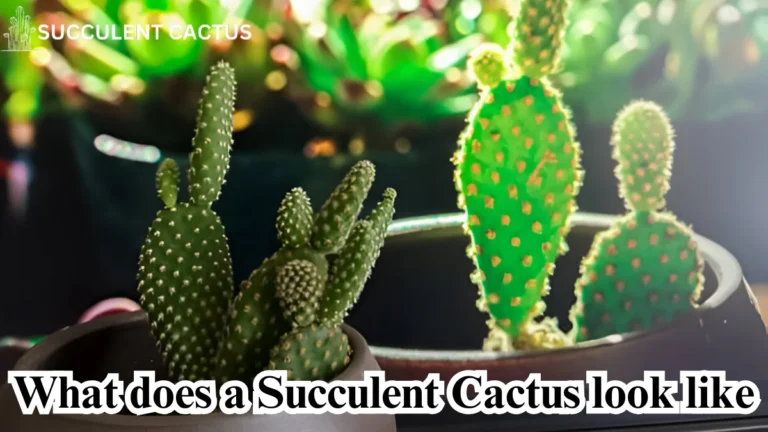Is Yucca a Cactus or Succulent? A Complete Guide

Yucca plants often confuse gardeners because of their spiky leaves, thick stems, and drought tolerance. Many people wonder, “Is yucca a cactus or succulent?” The answer lies in its botanical classification, growth habits, and care requirements.
This guide explores yucca plants in detail, including their characteristics, differences from cacti and succulents, and how to care for them properly.
Understanding the Yucca Plant: Is It a Cactus or Succulent?
Yucca plants belong to the Asparagaceae family, not the Cactaceae (cactus) family. However, they share some features with succulents.
Botanical Classification of Yucca
Yucca plants belong to the genus Yucca, which includes around 50 species. Unlike cacti, yuccas lack areoles (small bumps where spines grow) and do not store water in their stems like typical succulents.
| Plant Type | Scientific Family | Key Features |
| Yucca | Asparagaceae | Sword-like leaves, tall flower spikes |
| Cactus | Cactaceae | Spines, areoles, water-storing stems |
| Succulent | Various (Crassulaceae, etc.) | Fleshy leaves, drought tolerance |
How Yucca Differs from a Cactus
- Cacti have spines and areoles, but yuccas have long, fibrous leaves.
- Yuccas store water in their roots, while cacti store it in their stems.
- Cacti often have ribbed, round stems, while yuccas have long, sword-like leaves.
Why People Mistake Yucca for a Cactus
- Yucca thrives in dry, desert-like climates, just like cacti.
- It has spiky, stiff leaves that resemble some cactus species.
- Yucca grows in rocky, sandy soils, similar to many cacti.
Although yuccas share some features with cacti, they belong to a different plant family.
Is Yucca a Succulent? Key Differences
Yucca plants are technically succulents because they store water in their thick roots and leaves. However, they differ from typical succulents like Aloe or Echeveria.
Characteristics of Succulents vs. Yucca
Yucca plants and succulents share drought resistance, but they differ in leaf structure and water storage.
| Feature | Yucca | Typical Succulents |
| Water Storage | In roots and leaves | In thick, fleshy leaves |
| Leaf Shape | Long, sword-like | Thick, rounded |
| Growth Rate | Slow to moderate | Usually slow |
| Flowering | Tall flower stalks | Small, star-shaped flowers |
Why Yucca is Considered a Semi-Succulent
- It stores water in its underground rhizomes, unlike most succulents.
- Its leaves are fibrous, not fleshy like most succulents.
- Yucca tolerates drought, but it does not rely on fleshy leaves for survival like other succulents.
How Yucca Adapts to Dry Climates
Yucca plants use a deep root system to find underground water. This adaptation makes them hardier than most succulents in extremely dry conditions.
While yucca shares characteristics with succulents, it is not a true succulent in the traditional sense.
The Different Types of Yucca Plants
There are over 50 species of yucca plants, each with unique growth habits and adaptations.
Desert Yuccas
These yuccas thrive in hot, dry conditions and have thick, waxy leaves to prevent water loss.
Examples:
- Joshua Tree (Yucca brevifolia) – A famous tree-like yucca.
- Banana Yucca (Yucca baccata) – Produces edible fruit.
Tropical Yuccas
These species grow in humid climates and have softer, broader leaves.
Examples:
- Giant Yucca (Yucca elephantipes) – Often grown as an indoor plant.
- Soft-Leaf Yucca (Yucca recurvifolia) – Has curved leaves.
Cold-Hardy Yuccas
Some yucca species survive freezing temperatures, making them perfect for cold regions.
Examples:
- Soapweed Yucca (Yucca glauca) – Grows in prairie landscapes.
- Spanish Dagger (Yucca gloriosa) – Tolerates cold, coastal climates.
How to Care for Yucca Plants
Yucca plants are low-maintenance and thrive in various conditions.
Soil Requirements for Yucca
Yucca prefers well-draining soil with sand and gravel.
| Soil Type | Suitability for Yucca |
| Sandy soil | Excellent |
| Loamy soil | Good |
| Clay soil | Poor (retains too much water) |
Watering Needs
- Water once every 2-3 weeks in warm months.
- Reduce watering to once a month in winter.
- Allow soil to dry completely before watering again.
Sunlight Requirements
- Place yucca in full sun for 6-8 hours daily.
- Indoors, position it near a south-facing window.
Yucca thrives with minimal care, making it a great plant for beginners.
Yucca vs. Cactus vs. Succulent: Key Differences
Although yucca, cacti, and succulents share similar environments, they have distinct differences in structure, growth, and care.
Leaf and Stem Differences
- Yucca has long, sword-like leaves with fibrous textures.
- Cacti have spines instead of leaves to reduce water loss.
- Succulents have thick, fleshy leaves for water storage.
| Feature | Yucca | Cactus | Succulent |
| Leaf Type | Long, sword-like | None or small | Thick and fleshy |
| Water Storage | Roots and leaves | Stems | Leaves |
| Spines | No | Yes | No |
Root System Comparison
- Yucca has a deep, fibrous root system for accessing underground water.
- Cacti have shallow, widespread roots to absorb surface moisture quickly.
- Succulents have small, efficient roots that retain water.
Environmental Adaptation
- Yucca and succulents store water in different ways but both thrive in dry environments.
- Cacti are designed for extreme drought, while yucca can tolerate some moisture.
Uses of Yucca Plants
Yucca plants have been used for centuries in medicine, food, and landscaping.
Medicinal Uses of Yucca
Yucca contains saponins and antioxidants, making it useful in traditional medicine.
Health benefits include:
- Anti-inflammatory properties for arthritis relief.
- Supports digestion by promoting gut health.
- Boosts the immune system due to its antioxidant content.
Yucca as a Food Source
Certain yucca species produce edible flowers, fruits, and roots.
Examples of edible parts:
- Yucca root (cassava) – Used to make flour, fries, and bread.
- Yucca flowers – Eaten in salads or soups.
Landscaping and Decorative Uses
Yucca is a popular landscaping plant due to its low water needs and dramatic appearance.
Common uses:
- As a focal point in desert gardens.
- In rock gardens and xeriscaping.
- As an indoor houseplant (e.g., Yucca elephantipes).
Yucca Plant Growth and Lifespan
Yucca plants have a long lifespan and can grow for several decades under the right conditions.
How Fast Does Yucca Grow?
Yucca plants grow slowly to moderately, adding a few inches per year.
| Yucca Type | Growth Rate | Average Height |
| Indoor Yucca | Slow | 3-6 ft |
| Outdoor Yucca | Moderate | 6-30 ft |
Lifespan of a Yucca Plant
- Some yucca species live for over 100 years.
- The Joshua Tree (Yucca brevifolia) can live for several centuries.
How to Encourage Healthy Growth
- Provide full sun for at least 6-8 hours daily.
- Use well-draining soil to prevent root rot.
- Water sparingly, allowing the soil to dry between waterings.
Yucca Flowering and Pollination
Yucca plants produce beautiful white or cream-colored flowers, but only under specific conditions.
When and How Yucca Blooms
- Yucca plants bloom once a year in late spring or summer.
- They require mature age and plenty of sunlight to flower.
Pollination and Yucca Moth Relationship
Yucca flowers rely on the yucca moth (Tegeticula spp.) for pollination.
Yucca Moth Pollination Process:
- The moth lays eggs inside the yucca flower.
- The moth pollinates the flower while depositing eggs.
- The larvae feed on some seeds, while others develop into new plants.
Why Your Yucca Might Not Bloom
- Insufficient sunlight – Yuccas need full sun to flower.
- Too much water – Overwatering prevents blooming.
- Immaturity – Young yuccas may take years to bloom.
Common Pests and Diseases Affecting Yucca
Yucca plants are resistant to most pests, but they can occasionally face issues.
Common Pests
- Scale Insects – Appear as small, brown bumps on leaves.
- Mealybugs – Leave white, cotton-like clusters on the plant.
- Spider Mites – Cause yellow spots and webbing on leaves.
How to Treat Pests
- Use neem oil or insecticidal soap.
- Wipe leaves with alcohol to remove mealybugs.
- Increase humidity to discourage spider mites.
Yucca Diseases and How to Prevent Them
- Root Rot – Caused by overwatering. Solution: Use well-draining soil.
- Leaf Spot – Fungal infection causing brown spots. Solution: Improve air circulation.
- Crown Rot – Causes plant decay at the base. Solution: Avoid excessive watering.
How to Propagate Yucca Plants
Yucca propagation is easy and can be done using seeds, cuttings, or offsets.
Propagating Yucca from Offsets
- Find small baby plants growing at the base of the mother plant.
- Cut them off with a sharp knife and let them dry.
- Plant in well-draining soil and water sparingly.
Growing Yucca from Cuttings
- Take a stem cutting and let it dry for a few days.
- Plant in dry soil and avoid watering immediately.
- Roots form in 3-4 weeks.
Propagating Yucca from Seeds
- Yucca seeds take longer to grow than offsets or cuttings.
- Soak seeds in warm water for 24 hours before planting.
- Germination occurs in 2-4 weeks.
Best Yucca Plant Varieties for Indoor and Outdoor Growing
Some yucca species are better suited for indoor growing, while others thrive outdoors.
Best Indoor Yucca Plants
- Yucca elephantipes (Spineless Yucca) – Great for homes and offices.
- Yucca recurvifolia (Soft Leaf Yucca) – Tolerates low light conditions.
Best Outdoor Yucca Plants
- Yucca rostrata (Beaked Yucca) – Withstands cold and heat.
- Yucca gloriosa (Spanish Dagger) – Grows in coastal areas.
How to Choose the Right Yucca Variety
- For indoors, pick low-maintenance species like Yucca elephantipes.
- For outdoors, choose hardy species like Yucca rostrata.
Final Thoughts: Is Yucca a Cactus or Succulent?
Yucca is neither a cactus nor a true succulent, but it shares features with both.
- It stores water like succulents.
- It thrives in dry conditions like cacti.
- However, it lacks areoles and spines, which are defining features of cacti.
Yucca is a versatile plant perfect for landscaping, indoor décor, and drought-resistant gardening. 🌿
FAQs About Yucca: Is It a Cactus or a Succulent?
1. Is Yucca a cactus or a succulent? Yucca is a succulent, not a cactus. While it shares some characteristics with cacti, such as water storage in its thick leaves, it lacks the distinctive areoles that define cacti. Yuccas belong to the Asparagaceae family, whereas cacti belong to the Cactaceae family.
2. Can Yucca survive in the same soil as cacti? Yes, Yucca thrives in well-draining soil similar to cactus soil. A mix of sand, perlite, and loamy soil works best. However, Yuccas can tolerate slightly richer soil compared to cacti, as long as it remains well-drained.
3. How often should I water a Yucca plant? Yucca plants are drought-tolerant and need watering only every 2-3 weeks in warm weather and once a month in winter. Overwatering is a common mistake that leads to root rot.
4. Do Yucca plants produce flowers like cacti? Yes, Yucca plants bloom, producing tall stalks with bell-shaped white flowers. Unlike many cacti that have vibrant, short-lived flowers, Yucca flowers are long-lasting and attract pollinators like yucca moths.
5. Can I grow Yucca indoors like a succulent or cactus? Yes! Yuccas can thrive indoors, especially in bright light conditions. Popular indoor species include Yucca elephantipes (Spineless Yucca), which grows well in pots and requires minimal care, much like indoor succulents.
Conclusion: Understanding Yucca’s Place in the Plant World
Yucca plants are often mistaken for cacti due to their drought resistance, spiky appearance, and ability to thrive in arid environments. However, Yucca is a succulent, not a cactus, as it lacks areoles—the key characteristic of cacti. These hardy, low-maintenance plants are excellent choices for both indoor and outdoor gardens, offering stunning architectural foliage and beautiful white flowers. They require well-draining soil, minimal watering, and full to partial sunlight, making them an ideal choice for plant lovers seeking a desert aesthetic.





